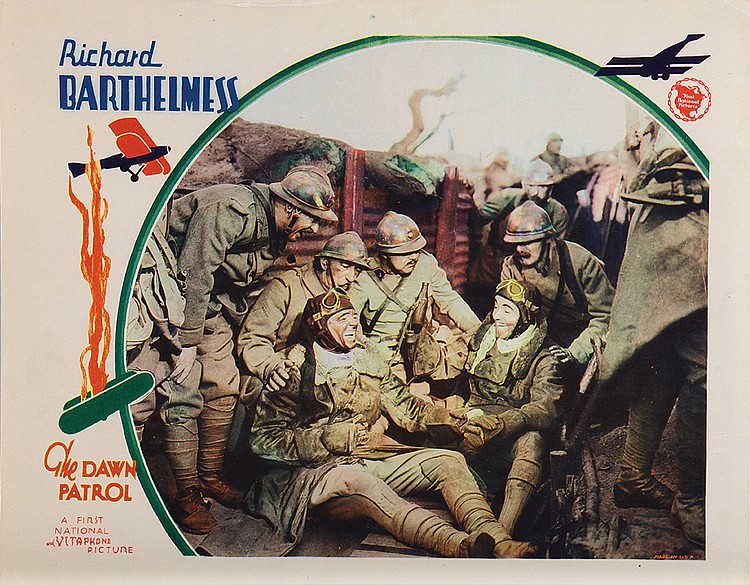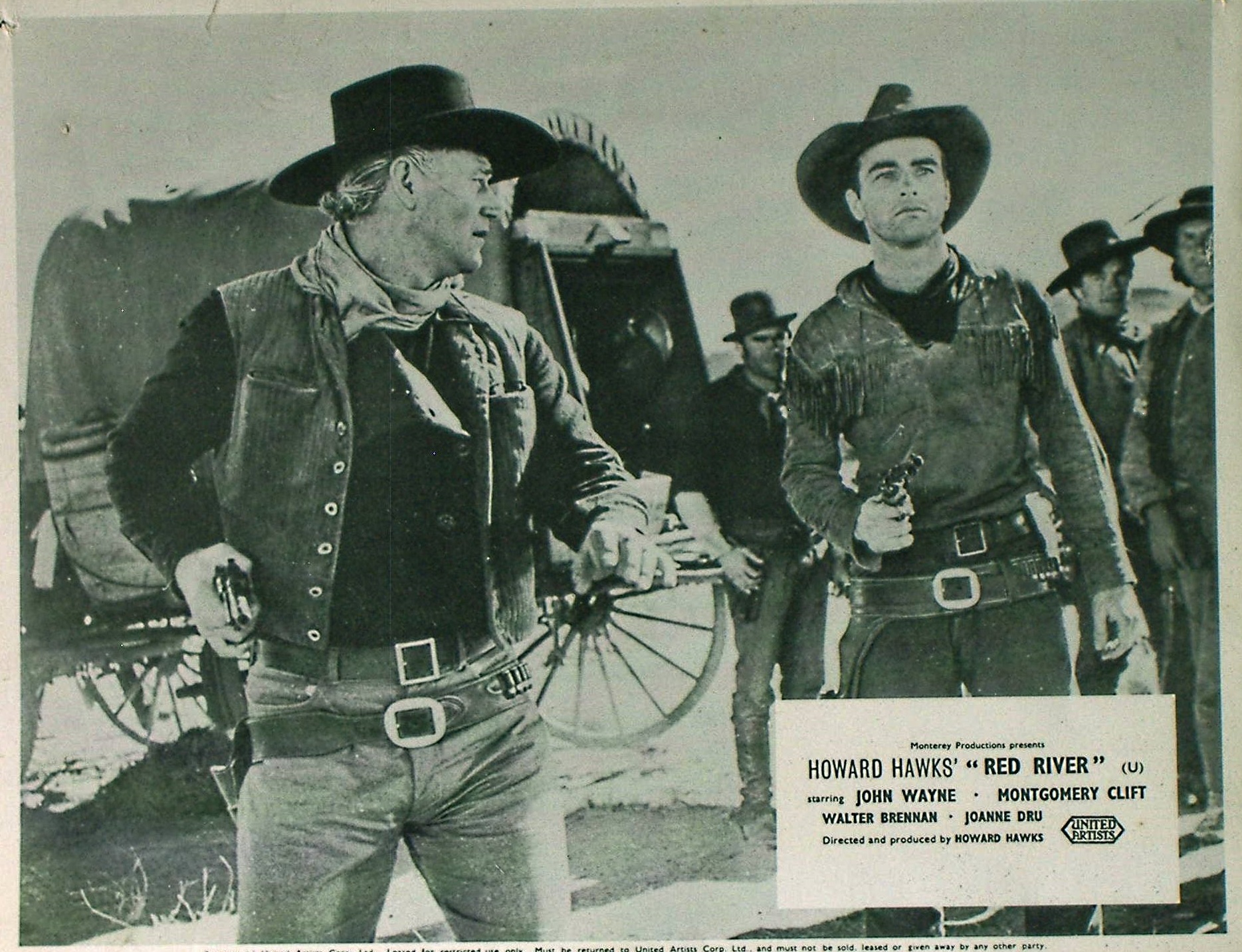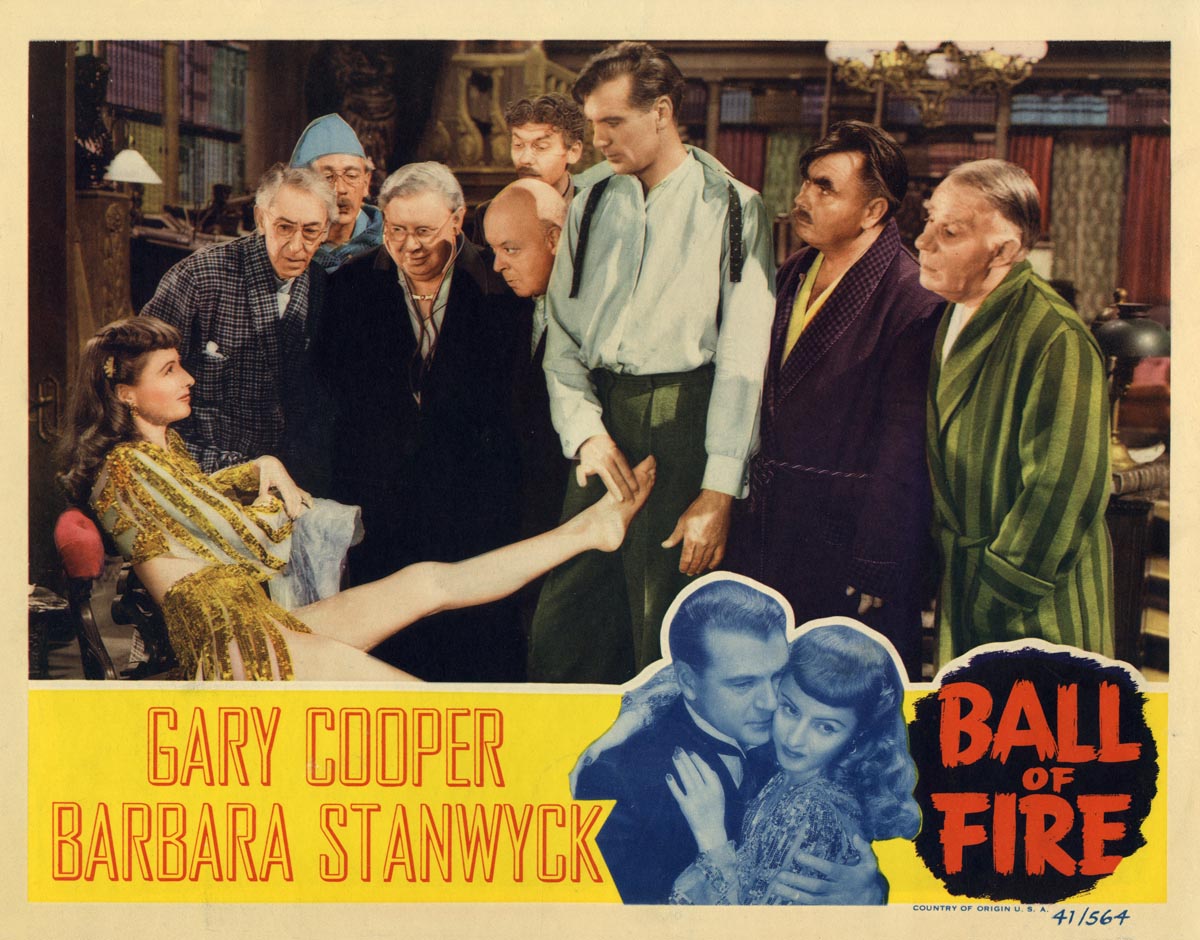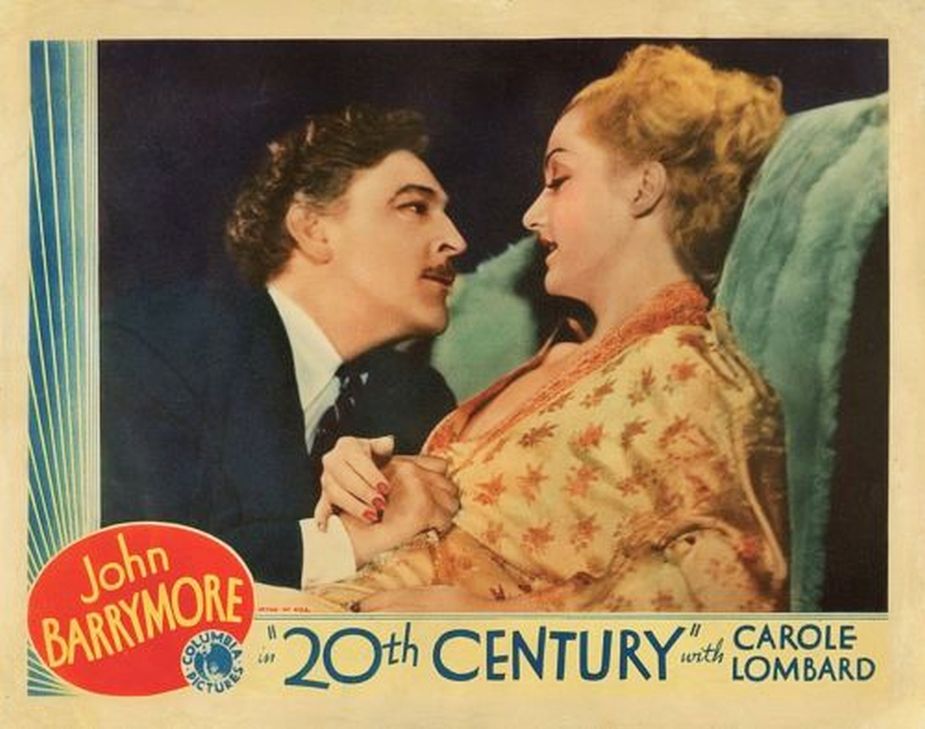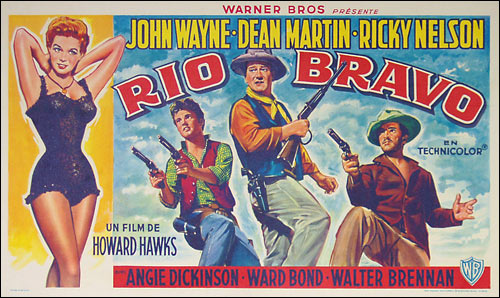One of my all time favorite directors is the amazing Howard Hawks! He has so many classics to his name people don’t know what category to put him in and so often he gets missed because he was so all-around great at directing anything and everything. One of the very best things about him is that he doesn’t do a lot of tricks with the camera. He nails the camera down and lets the story unfold and captivate the audience. He was simple and because of that, his style paired well with every genre as he made masterpieces in comedy, film noir, action, drama, western, science fiction, gangster…you name it, it’s there. His dialogue is rapid-fire…his scripts were 3 times longer than anyone else’s and he set the bar very high for his actors. Here are my top 15 favorite Howard Hawks films:
He never got over the plane crash death of his brother Kenneth Hawks of whom, Howard later said, probably had the potential to be an even greater filmmaker than himself. Nonetheless, he continued to fly after his brother’s death and went on to shoot many films about pilots, like this film and the next one on the list. The Dawn Patrol was released 8 months after his brother’s death. Director Howard Hawks, also was a pilot in the US Army during World War I, and he flew in the battle scenes of this movie as a German pilot. Remade eight years later with Errol Flynn and David Niven virtually word -for-word.
14. Only Angels Have Wings (1939)
Howard Hawks, definitely had his favorite stars to work with. One of his favorite actors was Cary Grant. He worked with him 5 times and all but Monkey Business (1952) has made my list. He said of Grant, “Cary Grant was so far the best that there isn’t anybody to be compared to him.” Now, in return, Howard Hawks and Jean Arthur did not get along during filming. Arthur was not used to Hawks’ highly improvisational style, and when Hawks wanted Arthur to play Bonnie much in a subtly sexy way (not unlike his other “Hawksian women”, Arthur flatly said, “I can’t do that kind of stuff.” Hawks told Arthur at the end of the shoot, “You are one of the few people I’ve worked with that I don’t think I’ve helped at all. Someday you can go see what I wanted to do because I’m gonna do this character all over again.” Years later Hawks returned home to find Arthur waiting for him in his driveway. She had just seen his To Have and Have Not (1944) and confessed, “I wish I’d done what you’d asked me to do. If you ever make another picture with me, I’ll promise to do any goddamn thing you want to do. If a kid (Lauren Bacall) can come in and do that kind of stuff, I certainly could do it.” Hawks and Arthur never collaborated again.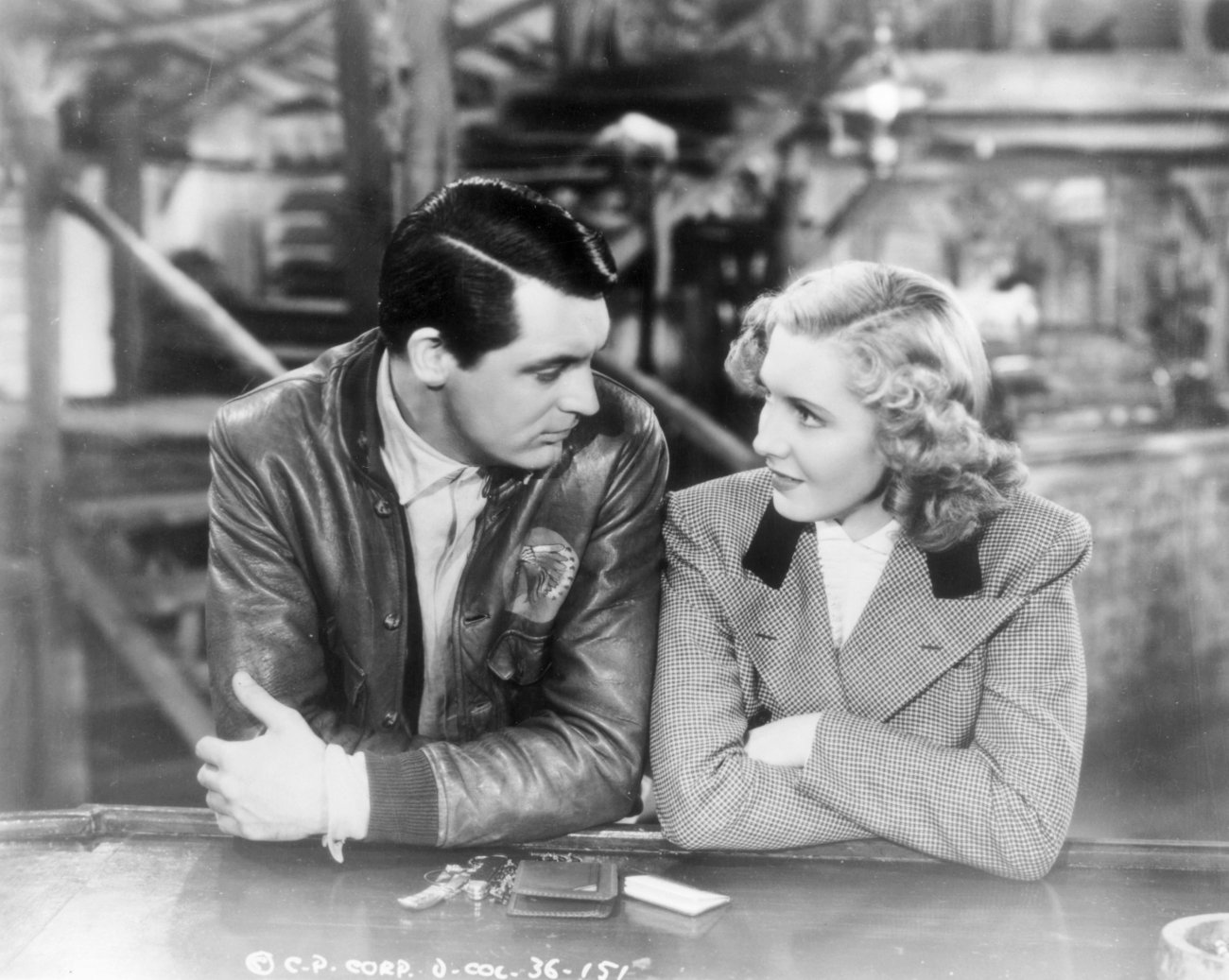
A lot of the film was from Hawks own experiences as a pilot. A certain critic said, “It’s the only picture Hawks ever made that didn’t have any truth in it”. Hawks shot back, “I wrote him a letter and said, “Every blooming thing in that movie was true. I knew the men that were in it and everything about it”. But it was just where truth was stranger than fiction.” For example, Howard Hawks had known a real-life flier who once parachuted from a burning plane. His copilot died in the ensuing crash and his fellow pilots shunned him for the rest of his life. In this film, Richard Barthelmess plays a pilot who is shunned because he jumped out of a plane and left his mechanic to die. In another scene, with the exception of the rain, The Kid’s death scene was copied nearly exactly and word-per-word from a pilot’s death that Hawks had actually witnessed years before.
Another actor that Hawks frequently worked with was John Wayne. After seeing John Wayne’s performance in the film, directed by rival director Howard Hawks, John Ford is quoted as saying, “I never knew the big son of a bitch could act.” This led to Ford casting Wayne in more complex roles in films like She Wore a Yellow Ribbon (1949) and The Searchers (1956). When Ford was dying they used to discuss how hard it was to make a western without Wayne. “John Wayne represents more force, more power, than anybody else on the screen,” Hawks would say later. “He never squawks about anything. He’s the easiest person I ever worked with. Because he never says anything about it, he just goes ahead and does it.” He would add, “Wayne is underrated. He’s an awfully good actor. He holds a thing together; he gives it a solidity and honesty, and he can make a lot of things believable.” Hawks worked with Wayne in 5 movies as well, in Red River, Rio Bravo, Hitari! (1962), El Dorado (1967) and Rio Lobo (1970).
Filmed in 1946 but held for release for two years, in part due to legal problems with Howard Hughes who claimed it was similar to his The Outlaw (1943). Writer Borden Chase readily admitted that the storyline was Mutiny on the Bounty (1935) with saddles and stirrups.
This is a splendid take on Snow White and the Seven Dwarfs as if Snow White was a wisecracking nightclub singer and the seven dwarfs were seven educated college professors. Gary Cooper and Barbara Standwick work together for the 2nd time in 1941 (the first time being the marvelous Frank Capra film, Meet John Doe), and they are magic. The roles of the seven professors (besides Gary Cooper) were inspired by Disney’s Seven Dwarfs. There is even a photograph showing the actors sitting in front of a Disney poster, each one in front of his corresponding dwarf: S.Z. Sakall – Dopey; Leonid Kinskey – Sneezy; Richard Haydn – Bashful; Henry Travers – Sleepy; Aubrey Mather – Happy; Tully Marshall – Grumpy, and Oskar Homolka – Doc.
11. Scarface (1932)
As of the fifth edition of “1001 Movies You Must See Before You Die” (edited by Steven Schneider), 11 of Hawks’ films are included, second only to Alfred Hitchcock in abundance. The films are: Scarface (1932), Bringing Up Baby (1938), Only Angels Have Wings (1939), His Girl Friday (1940), Sergeant York (1941), To Have and Have Not(1944), The Big Sleep (1946), Red River (1948), The Big Sky (1952), Gentlemen Prefer Blondes (1953) and Rio Bravo (1959).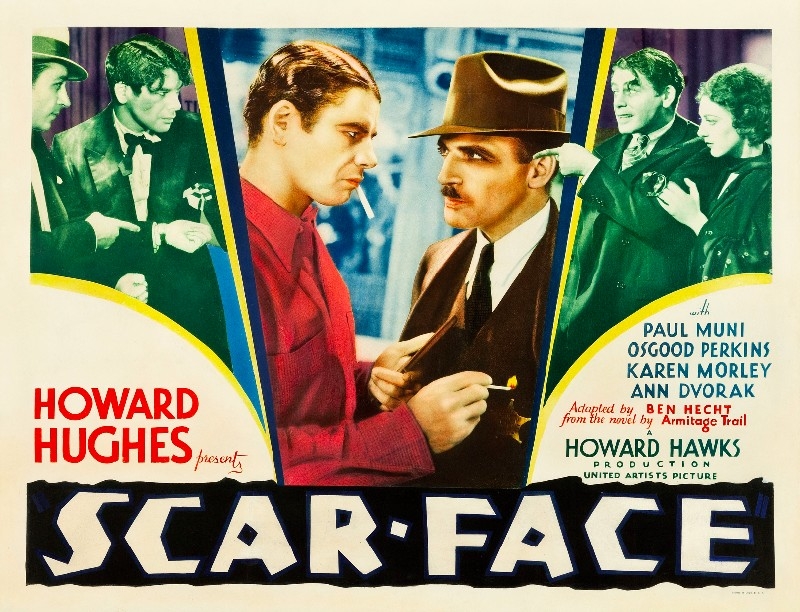
Screenwriter Ben Hecht was a former Chicago journalist familiar with the city’s Prohibition-era gangsters, including Al Capone. During the filming Hecht returned to his Los Angeles hotel room one night to find two Capone torpedoes waiting for him. The gangsters demanded to know if the movie was about Capone. Hecht assured them it wasn’t, saying that the character Tony Camonte was based on gangsters like “Big” Jim Colosimo and Charles Dion O’Bannion. “Then why is the movie called Scarface?” one of the hoods demanded. “Everyone will think it’s about Capone!” “That’s the reason,” said Hecht. “If you call the movie Scarface (1932), people will think it’s about Capone and come to see it. It’s part of the racket we call show business.” The Capone hoods, who appreciated the value of a scam, left the hotel placated.
Al Capone was rumored to have liked the film so much that he had his own copy of it, on 35mm film.
When asked by John Barrymore why he should play the role of Oscar, Howard Hawks replied, “It’s the story of the biggest ham on earth and you’re the biggest ham I know.” Barrymore accepted at once. John Barrymore once said that the role of Oscar was “a role that comes once in a lifetime” and even deemed this his favorite of all the movies he appeared in. After filming had ended, John Barrymore gave Carole Lombard an autographed photo inscribed, “To the finest actress I have worked with, bar none.” Howard Hawks allowed John Barrymore and Carole Lombard to improvise freely during filming. “When people are as good as those two, the idea of just sticking to lines is rather ridiculous,” he told Peter Bogdanovich in an interview. “Because if Barrymore gets going, and he had the ability to do it, I’d just say, ‘Go do it.’ And Lombard would answer him; she was such a character, just marvelous.”
9. Sergeant York (1941)
Hawks had said in interviews that he was supposed to direct the now-beloved Casablanca (1942) and Michael Curtiz was meant to direct Sergeant York (1941). However, the two directors had lunch together and Curtiz complained that he knew nothing about the “hill people”, while Hawks was struggling to make this “musical comedy”, so they switched films. Hawks said that he always considered “Casablanca” a musical comedy because of the number of singing scenes in the café, namely the “La Marseillaise” scene. Later, Hawks said that Curtiz shot the film “beautifully and the whole picture came out different because of the two people in it [Humphrey Bogart and Ingrid Bergman]. They made you believe something. When I saw ‘Casablanca’ I liked it, but I never had any faith in my doing anything like that.” (Book Source: “Who the Devil Made it...” by Peter Bogdanovich).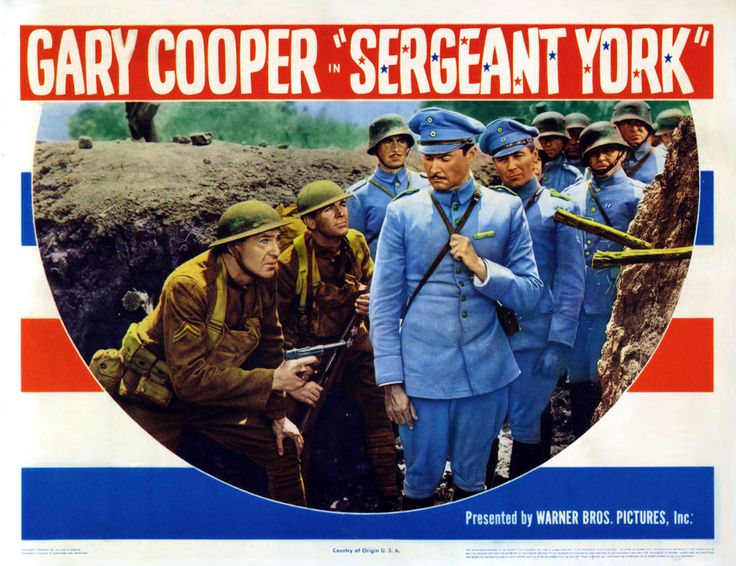
Even though he was one of the most prolific directors of his generation, having directed five actors to Oscar nominations, he himself has only been nominated for an Academy Award once. It was for Sergeant York and he lost to John Ford for How Green is My Valley.
8. Bringing Up Baby (1938)
Directed three of the American Film Institute’s 100 Funniest Movies: Bringing Up Baby (1938) at #14, His Girl Friday (1940) at #19 and Ball of Fire (1941) at #92. I discuss this film in a little detail on my post about Cary Grant’s finest films: CLICK HERE TO READ THIS POST. This film is the inspiration for Peter Bogdanovich’s movie What’s Up, Doc? with Barbra Steisand and Ryan O’Neal.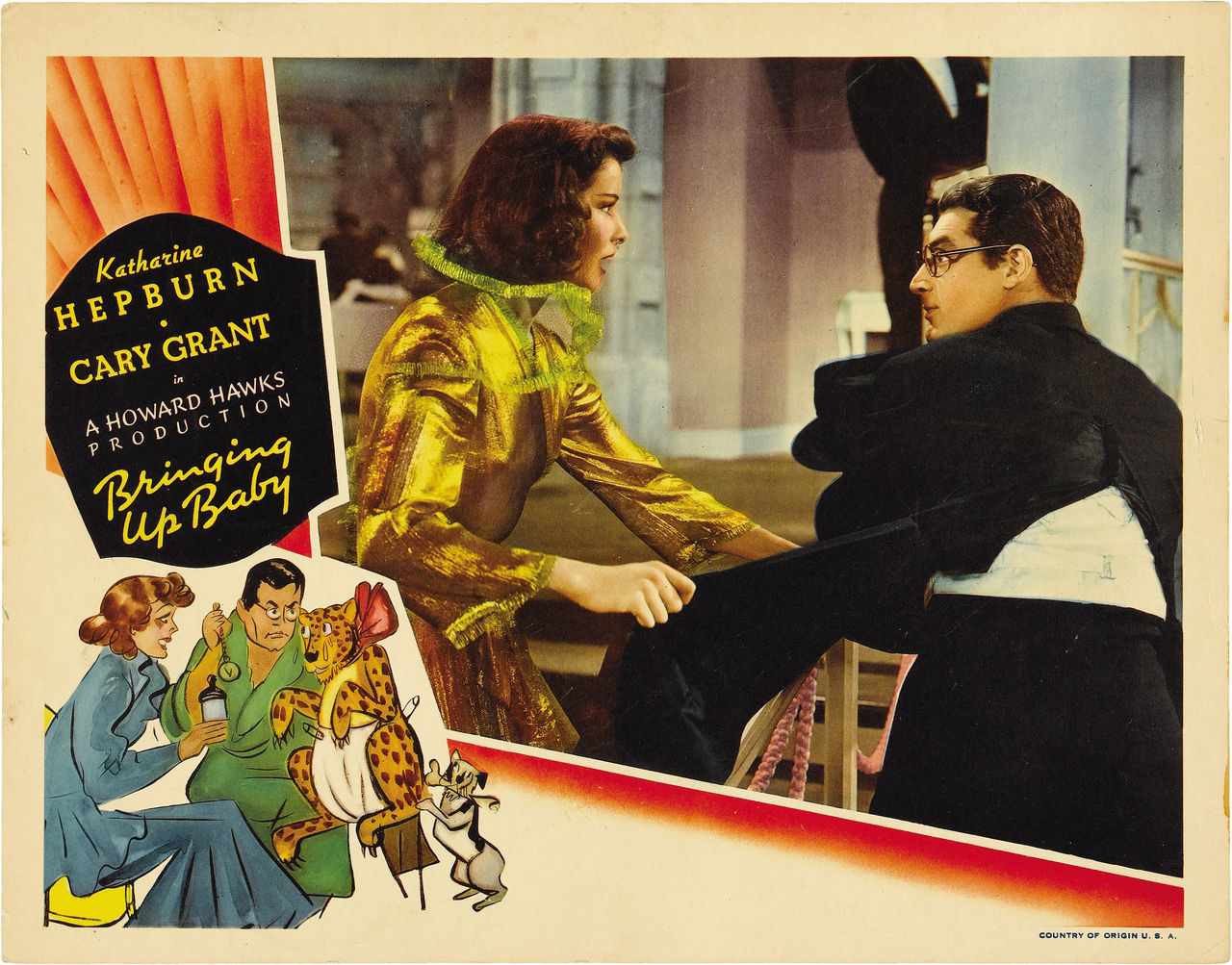
The scene in which Susan’s dress is ripped was inspired by something that happened to Cary Grant. He was at the Roxy Theater one night and his pants zipper was down when it caught on the back of a woman’s dress. Grant impulsively followed her. When he told this story to Howard Hawks, Hawks loved it and put it into the film. Christopher Reeve based his performance as Clark Kent in four “Superman” movies on Cary Grant’s “David Huxley” from this film. Now, truth is Howard Hawks modeled Cary Grant’s character, David, on silent film comedian Harold Lloyd, even having Grant wear glasses like the comedian. So we can thank Harold Lloyd for this movie, What’s Up, Doc? and 4 Superman movies!
7. To Have and Have Not (1944)
Screen debut of Betty Bacall, who Hawks renamed Lauren Bacall. He thought it sounded better. Hawks’ wife saw her on the cover of a magazine and persuaded him to put her in the movie. Humphrey Bogart and Bacall met and fell in love in this movie and were married a year later. They were married up until his death. Many aspects of Lauren Bacall’s screen persona in To Have and Have Not were based on Hawks’ wife, Slim (nicknamed by Hawks), including her glamorous dresses, long blonde hair, smoky voice and demure, mysterious demeanor. Humphrey Bogart’s character also refer to Bacall by the nickname “Slim” in the movie.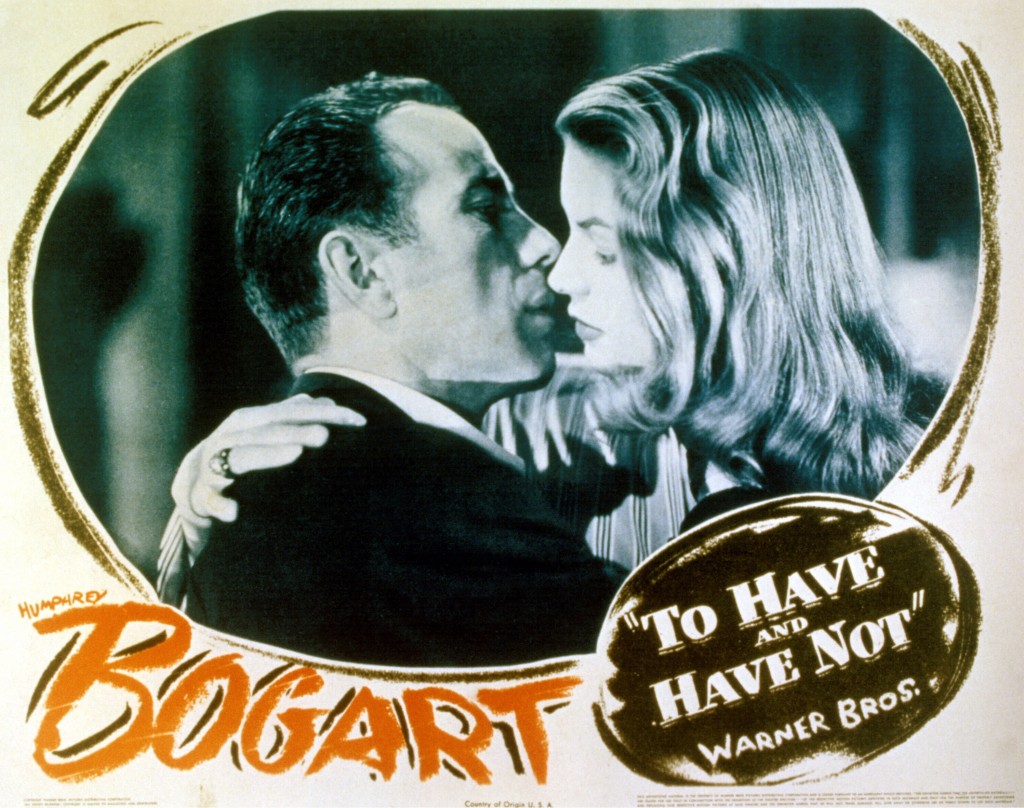
He said of Bacall, “We discovered Bacall was a little girl who, when she becomes insolent, becomes rather attractive. That was the only way you noticed her, because she could do it with a grin. So I said to Bogie (Humphrey Bogart), “We are going to try an interesting thing. You are about the most insolent man on the screen and I’m going to make this girl a little more insolent than you are.””
6. Man’s Favorite Sport (1964)
This film was meant to be an homage/remake to Hawks’ Bringing Up Baby (1938), and Hawks even wanted Katharine Hepburn and Cary Grant to star in the movie. Katherine Hepburn and Cary grant turned the movie down however and Paula Prentiss and Rock Hudson was cast instead. It’s a great and fun movie and I think it’s my 2nd favorite movie with Rock Hudson behind the magnificent Pillow Talk with Doris Day. The screwball formula is there, however, and I especially love it when the female is the nutty and manic one of the two people in a screwball comedy as Paula is in this one. She really puts Rock through some really rough things in this one. Fun…
5. The Thing From Another World (1951) (uncredited)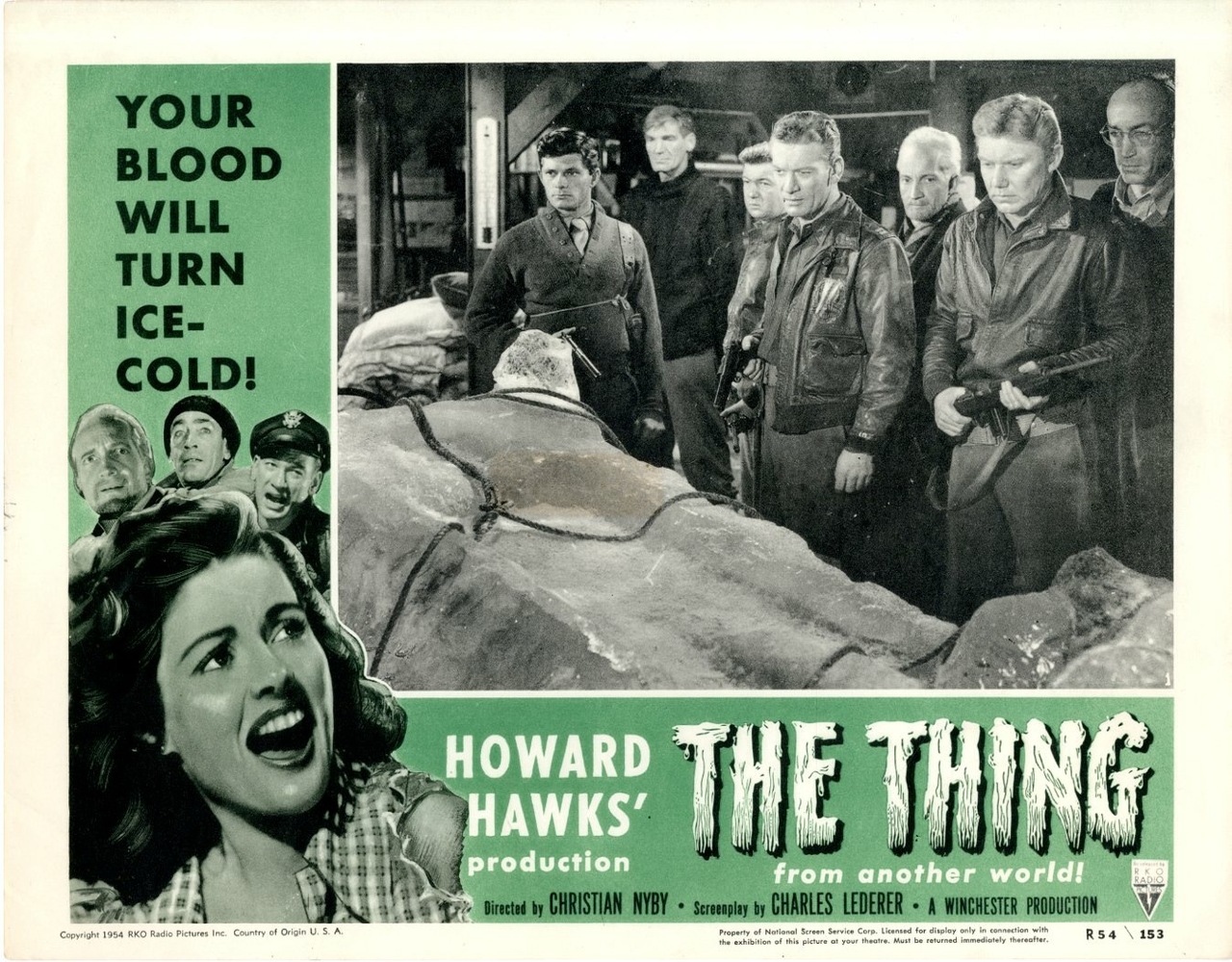
Was the uncredited “ghost director” on the science-fiction classic The Thing from Another World (1951), for which his longtime editor and friend Christian Nyby received sole credit. It was only near the end of Hawks’ life that both he and Nyby conceded that he had indeed directed most of the film, as had long been rumored. On the other hand, several of the film’s cast members…James Arness was adamant in interviews that Nyby did in fact direct the film by himself, although Hawks–as the film’s producer–did have input. As opposed to that interview with James Arness, the film’s Star, Kenneth Tobey has maintained in many interviews that it was indeed Hawks who directed the film. Tobey said that he had worked with Nyby after this film on many occasions and he was a fine director, but Hawks did call the shots on most of the film. Regardless, I’ll add it here, as the film is fabulous! I write about this movie in some detail regarding the stunt work for the film: PLEASE CLICK HERE TO READ.
4. I Was a Male War Bride (1949)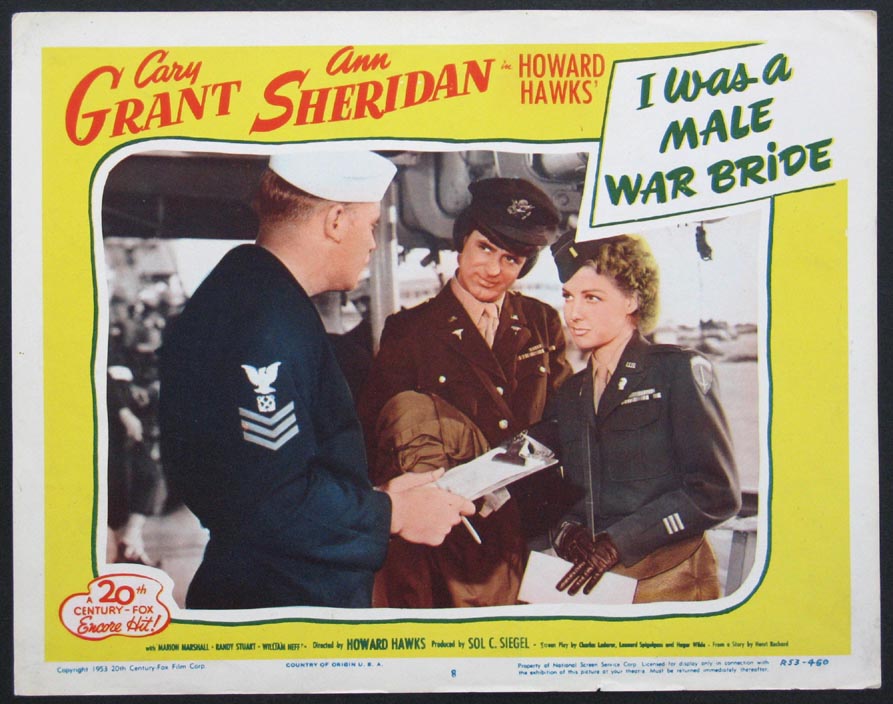
This film was based on I Was an Alien Spouse of Female Military Personnel Enroute to the United States Under Public Law 271 of the Congress, a biography of Henri Rochard, a Belgian who married an American nurse. It is the story of French Army officer Henri Rochard (Grant) who must pass as a war bride in order to go back to the United States with Women’s Army Corps officer Catherine Gates (Ann Sheridan). The film is noted as being a low key screwball comedy with a famous final sequence featuring Cary Grant impersonating a female Army nurse. I find this film to be hilarious…I discuss this film in a little detail on my post about Cary Grant’s finest films: CLICK HERE TO READ THIS POST. The film was Howard Hawks’ 3rd highest grosser, behind only Sergeant York (1941) and Red River (1948)
Hawks would say in an interview, “Rio Bravo (1959) was made because I didn’t like a picture called High Noon (1952). I saw “High Noon” at about the same time I saw another western picture, and we were talking about western pictures and they asked me if I liked it, and I said, “Not particularly”. I didn’t think a good sheriff was going to go running around town like a chicken with his head off asking for help, and finally his Quaker wife had to save him. That isn’t my idea of a good western sheriff. I said that a good sheriff would turn around and say, “How good are you? Are you good enough to take the best man they’ve got?” The fellow would probably say no, and he’d say, “Well, then I’d just have to take care of you”. And that scene was in Rio Bravo.”
Quentin Tarantino said that Hawks’ Rio Bravo, may be his favorite movie of all time. Now, I’m not sure I would praise the film this way, but I will say this…it is my favorite Western I’ve ever seen and remains so to this day.
I discuss this film twice in our blog, once in a little detail on my post about Cary Grant’s finest films and then again in a post when I mention how the film was made from a play called the Front Page: CLICK HERE TO READ THIS POST ABOUT CARY GRANT. CLICK HERE TO READ THIS POST ABOUT THE FRONT PAGE.
One of the first, if not the first, films to have characters talk over the lines of other characters, for a more realistic sound. Prior to this, movie characters completed their lines before the next lines were started. The film could have been another pairing of Grant with Katherine Hepburn, as she was offered the role of Hildy, but she ultimately turned it down and the part when to Rosalind Russell.
1. The Big Sleep (1946)
This film was co-written by Hawks and frequent collaborator William Faulkner, who also wrote To Have and Have Not with him. It’s one of my all time favorite films and is just perfect from start to finish. William Faulkner never adjusted to life in Hollywood. While working on the script, he told Howard Hawks that the studio atmosphere was stifling him and asked if he could work at home. Hawks agreed. After a few days without hearing from the writer, Hawks called his hotel, only to learn that Faulkner had checked out and gone back to his native Mississippi. When Hawks called him there, Faulkner protested, “Well, you said I could go home and write, didn’t you?”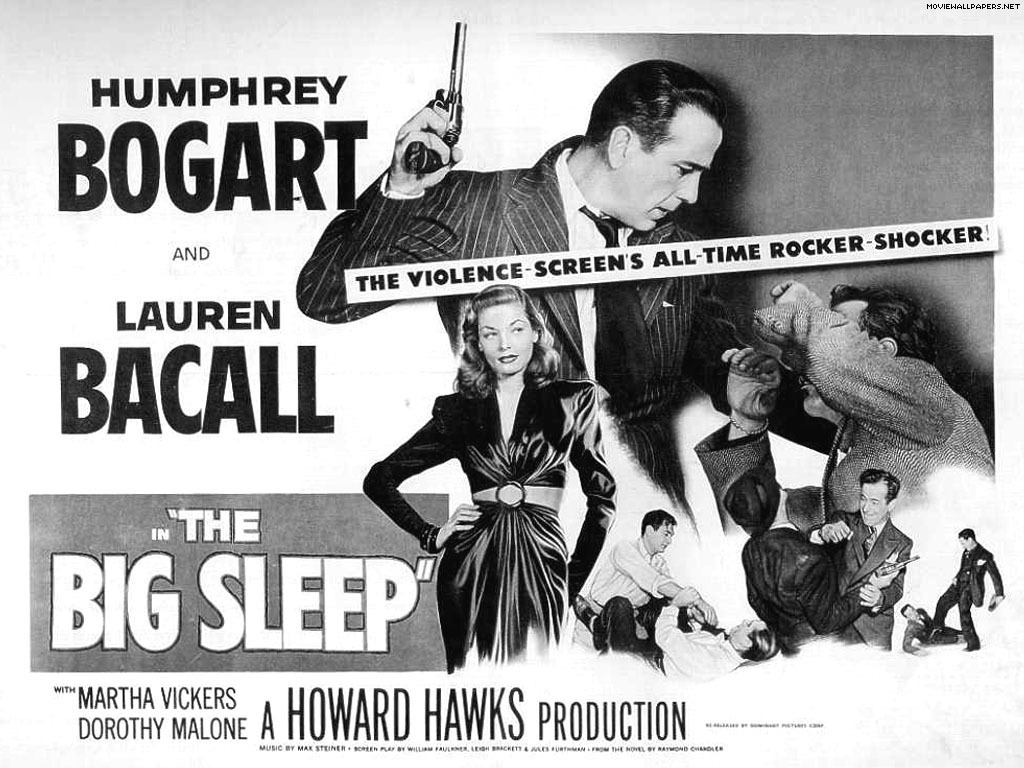
Howard Hawks enjoyed working with Humphrey Bogart and always called him “Bogie”. He would say of Bogie, “He was an extremely hard-working actor. He’d always pretend that he wasn’t, that he didn’t give a damn, but that wasn’t true. One day I said to him, “Bogie, you’re just a great big phony.” He put his finger to his lips and grinned at me. “Sure,” he said, “but don’t tell anyone.”” There was even a funny moment in a book store for Bogart where he acts like a nerd. The fussy persona that Marlowe adopts upon arriving in Geiger’s bookstore has been a subject of argument for years; Lauren Bacall said that Humphrey Bogart came up with it while Howard Hawks claimed in interviews that it was his idea. What both of them failed to notice is that it was in the original book (“I had my horn-rimmed glasses on. I put my voice high and let a bird twitter in it.) So in the end, all Bogart did was elaborate on it. According to Lauren Bacall, production was such fun, that they got a memo from Jack L. Warner saying “Word has reached me that you are having fun on the set. This must stop.”


